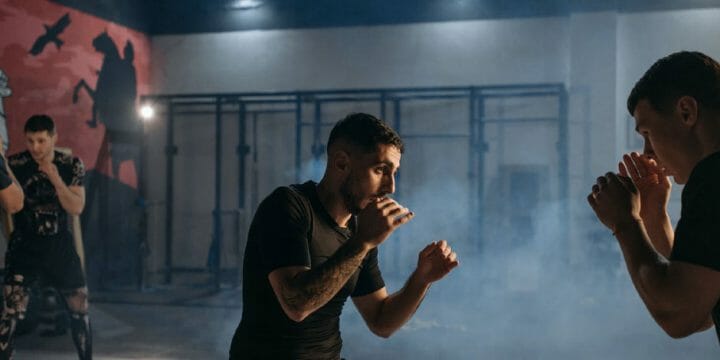Whether you’re shopping for new home gym equipment or just want to figure out how to make the best use of your time at the gym, you’ll inevitably be looking at using an incline bench or a flat bench.
I talked with other fitness experts and personally tested various incline and flat benches with a group of my clients.
So, we’ve put this guide together to help you make a better decision about which one to buy and use.
Quick Summary
- The main difference between an incline bench and a flat bench is in the chest muscle groups they target, with an incline bench focusing on upper pectoral muscles and shoulders, while a flat bench engages the entire chest.
- Proper technique and guidance are needed when using incline and flat benches to avoid potential harm.
- According to the Mayo Clinic, incline bench presses can help reduce strain on the rotator cuffs, making them a valuable addition to your workout routine.
- In my professional opinion, the choice between incline and flat bench exercises ultimately depends on individual fitness goals and comfort, with each offering unique advantages and versatility.
Comparing Incline vs. Flat Bench
- The main difference between an incline and a flat bench is in the chest muscle groups you target while exercising.
An incline bench targets the upper pectoral muscle and shoulders, whereas a flat bench allows you to load more weight and activates the entire chest.
Incline Bench Pros And Cons
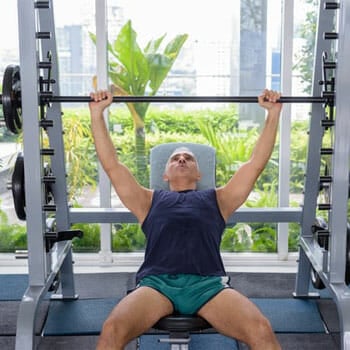
From the first time you do an incline press, you’ll immediately notice how different it feels on your upper pecs [1].
This new muscle activation in the upper pecs can often result in rapid lean growth and a much better body definition.
What you’ll also find is that the pressure on your shoulder muscle group and joints will change during an incline chest press.
According to Mayo Clinic, not only can that be helpful for someone with problems in the rotator cuffs [2], but if you want to try and lift more weight, then an incline bench might make it a bit easier.
Personally, I've seen clients benefit from reduced shoulder strain while incorporating incline bench presses into their routines, and it has made a noticeable difference in their strength progression.
- Allows targeted training for upper and lower pec muscles
- Adjustable bench setting may be needed for better back protection
- Incline position can also help reduce shoulder strain
- Many incline benches can be used for other muscle groups
- Poor incline performance can cause muscle imbalance and injury
- The only downside I would mention is that if you just head for the incline bench without someone showing you the right way to do incline presses, then you could do more harm than good.
- Your body position is different, and that means a complete rethink of how you hold and push the bar.
Incline Bench Press Examples
Here are four examples of exercises that you can add for a more targeted lower and upper pec routine.
1. Regular Barbell Bench Press
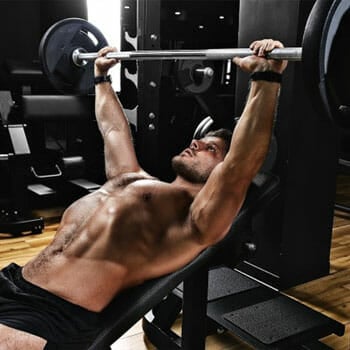
The barbell bench press has been the go-to exercise for bodybuilders since the very early days of gym equipment.
The benefit you have with an incline bench press is that you can split your sets from flat, effectively and safely, all the way to an almost upright position.
What I generally recommend is setting your incline bench press up at a 30-degree angle.
If it’s your first time, then lower the weight considerably from a flat position to get used to the body position and slightly different movement.
2. Incline Dumbbell Press
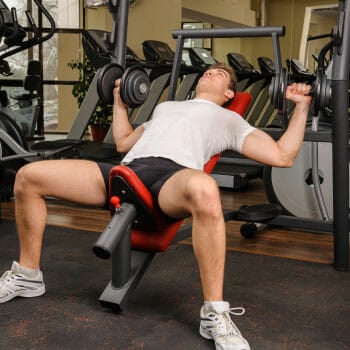
A great alternative to the barbell bench press is to use dumbbells in an incline position.
You can hold them the same way you would hold a barbell, but you also have the option to adjust your hand position just like a hammer curl.
It’s important to gradually approach your maximum lifting weight to avoid most shoulder injuries.
What you might notice right away is that you have a lot more range and freedom of movement with the incline bench press setup. Plus, according to a study in the National Library of Medicine, it can make a huge difference to your overall bench press strength [3].
3. Incline Dumbbell Flyes
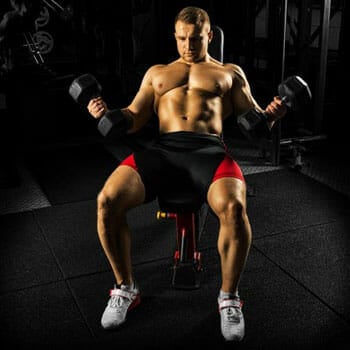
Another use of a regular incline bench press is setting it at the incline position for upper chest flyes.
It targets the same upper chest muscle groups, but with an added strain during a longer muscle extension.
Here’s what that means.
You set the chest press angle to about 20 degrees and grab a dumbbell for each hand.
Hold them above your face with your arms fully stretched out, and then lower your hands to each side in a wing-like motion.
Once you get to shoulder high, you pull the weight back up again to the starting point.
And that strain when your pecs are fully extended adds a lot of spice to this exercise.
4. Decline Bench Press
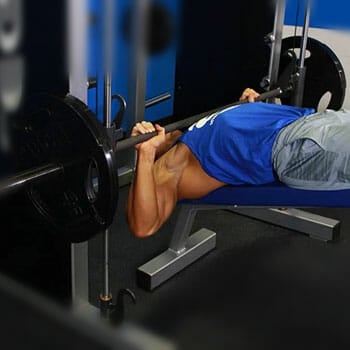
And finally, you have the option to perform a decline bench chest press.
This will feel very strange at first, but you set the angle to a slight decline position.
Ideally, have a spotter hand you the dumbbells once you’re in a position to avoid unnecessary lower back strain.
Then perform the decline dumbbell presses and feel how it targets the lower pecs a lot more than the other chest exercises.
“The Incline Bench Press is a compound upper-body exercise, meaning that multiple joints and muscles contribute to the movement. As a variation of the traditional flat Bench Press, it’s considered one of the best exercises to build a stronger and larger upper body.”
- Andy Haley, Writer at Stack.com
Flat Bench Pros And Cons
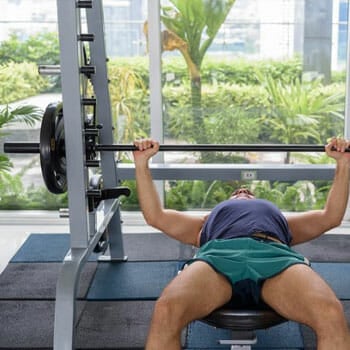
As a fitness enthusiast who has spent years in the gym, I can attest to the convenience and versatility of a flat bench for various workouts.
You can set up a flat bench under the power rack and combine multiple different exercises without needing to adjust the upper portion to a different angle.
Simply pull it out from under the rack and have a few dumbbells ready, and you’re good to go for a completely different workout.
I also find that some of the powerlifters that I work with feel more confident in the stability of a flat bench with little or no moving parts.
Any kind of movement during a flat bench press with a heavy load can push the panic buttons.
The final thing I would mention is the choice of dimensions.
You’ll generally find that if you need something longer or wider than standard, then a flat bench will give you more options than an incline one.
- It’s one of the easiest exercises to learn
- Many athletes prefer the stability of a flat bench
- Allows for multiple different exercises with the same basic equipment setup
- Usually available in longer and wider dimensions
- Flat bench press can add a lot of strain on the shoulder joints.
- The one thing I would say is that if you have problems with your shoulder joints, then flat benching might be less suitable compared to performing in an incline chest press.
Flat Bench Press Examples
Just because you cannot adjust your bench doesn’t mean that you’re stuck with just the standard flat bench press for your workouts.
Here are three ways to spice things up a bit.
1. Flat Barbell Bench Press
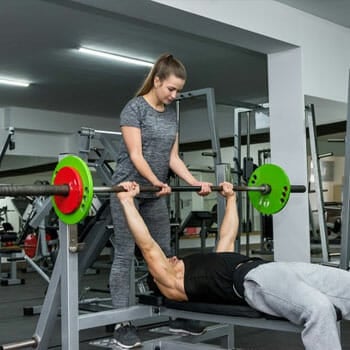
The standard flat barbell bench press should be the go-to chest exercise for any type of athlete.
Once you get the setup right, you’ll make sure that you protect your joints from injuries, which are a bit more common than most people realize, especially during heavy flat bench presses.
Grip the bar with your hands at shoulder-width apart and the bar resting on the ball of your hand.
Don’t make the mistake of allowing the bar to move up towards your fingers, as that will put a lot of strain on your wrists.
Keep the downward and upward movement nice and smooth with a short break between each rep to make sure your setup and balance are still good.
2. Close Grip
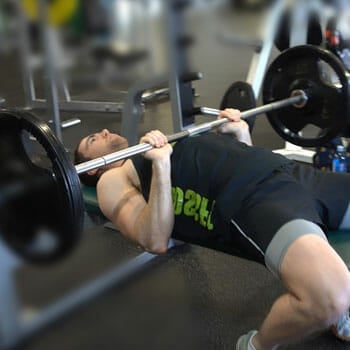
You definitely want to lower the weight a bit on this one. Not just because it’s more straining on the muscles, including the triceps brachii.
The problem is that the close handgrip will require a lot more focus on keeping the bar balanced.
Also, keep in mind that the close grip flat bench press puts some more strain on the shoulders than a regular bench press.
That means higher risks of injuries, which tend to have slow recovery times.
3. Dumbbell Pullover
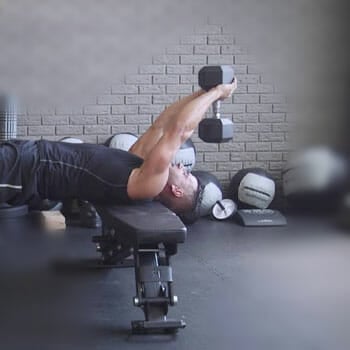
The final alternative for the flat bench press is to train your pecs with a completely different movement.
You lie down on the bench with your head right at the top. Grab a suitably sized dumbbell with both hands and hold it right above your head.
That means avoiding a weight that might slip and make a mess of your face.
Keep your arms straight and lower the dumbbell backward behind your head until it’s about the same height as the bench. Then pull it back up to the starting point.
Getting The Most Out Of Your Bench
Ultimately, it should come down to these four things that will help you use a bench in an effective and safe way.
1. Think Of Safety First
Even with a flat bench press setup, you have to consider the weight that is floating just above your face and chest.
If you’re training at the gym, then make sure you have a spotter. And in a home gym setup, you’ll want to make sure that your rack has a safety bar that can catch the weight if you fail to complete a rep.
Also, check out our article on the top reasons you are experiencing wrist pain while bench pressing.
2. Choose The Right Angle
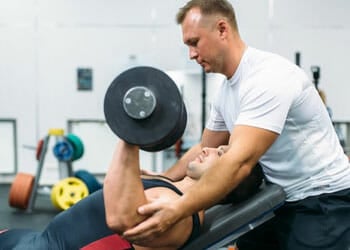
Make sure that you try out a few different angles and how it affects your pectoralis major in different ways.
Ideally, you want to include up to three different settings over a week to ten days to get a nice and even upper body composition.
3. Get Your Grip Right
This is probably where beginners make the biggest mistakes.
You want to have a personal trainer show you the correct hand position and wrist angle.
Getting flat benching wrong could mean losing control of the bar or having it roll up your palm and put some serious pressure on the wrist joints [4].
4. Pick The Right Weight
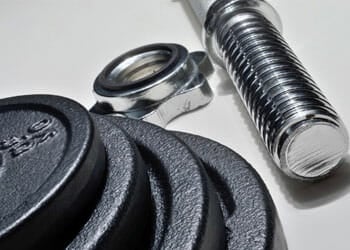
I see it all too often with people heading for the flat bench press with some huge weight plates.
They complete a few half-hearted reps and think they’re the new Hulk.
You’ll gain so much more by slowing down the movement with a short hold between each rep.
Additionally, I recommend my clients add a protein powder to their diet and training.
Try to count to 3 on the way down and then to 2 on the way up. With five seconds under tension on each rep, you’ll see much better results.
Cross-Training Benefits of Incline and Flat Bench Press Exercises
Cross-training involves incorporating a variety of exercises and activities into your workout routine to enhance overall fitness, prevent plateaus, and reduce the risk of overuse injuries.
These are the cross-training benefits of incline bench presses and flat bench presses.
1. Muscle Balance and Symmetry
Incline bench presses emphasize the upper portion of your chest, targeting the clavicular head of the pectoralis major muscle. Flat bench presses work on the lower and middle portions of your chest.
By alternating between these exercises, you can ensure that all aspects of your chest muscles are adequately developed, leading to a more balanced and symmetrical chest.
2. Enhanced Functional Strength
The upper chest muscles targeted during incline bench presses play a crucial role in various daily activities, including lifting objects, pushing, and reaching overhead. By strengthening these muscles, you can enhance your overall functional capacity and make everyday tasks easier.
3. Injury Prevention
Incorporating both incline and flat bench presses into your routine can contribute to injury prevention. Incline bench presses can be gentler on your shoulders because of the reduced stress on the rotator cuff compared to flat bench presses.
By varying your exercises, you reduce the risk of overuse injuries that can occur when you repeatedly stress the same muscle groups and joints.
4. Improved Muscle Confusion
Your muscles adapt to repetitive movements, which can lead to plateaus in your progress. By switching between incline and flat bench presses, you constantly challenge your muscles in different ways.
This variation keeps your body guessing and can lead to continuous gains in strength and muscle growth.
5. Versatile Workout Plans
You can create diverse routines by adjusting the angle of the bench or using different grips, such as a wide grip or a close grip. These variations target specific muscle fibers, preventing boredom and ensuring your workouts remain engaging and effective.
FAQs
Is Incline Bench Press Harder Than Regular?
Yes, the incline bench press is harder than regular. The reason is that as your body approaches the fully-seated position, you have to engage the shoulder and weaker upper pec muscles.
Should You Do Flat and Incline on the Same Day?
Yes, you should do flat and incline on the same day. It’s the best way to ensure that you give all the individual upper pec muscles the same amount of attention to achieve an even overall upper pec development.
References:
- https://www.physio-pedia.com/Pectoralis_major
- https://www.mayoclinic.org/diseases-conditions/rotator-cuff-injury/symptoms-causes/syc-20350225
- https://www.ncbi.nlm.nih.gov/pmc/articles/PMC7449336/
- https://fitbod.me/blog/wrist-pain-bench-press
About The Author
You May Also Like



